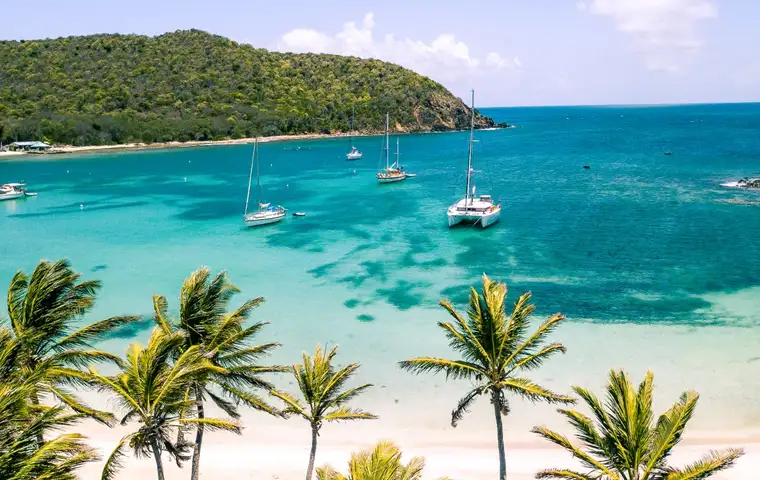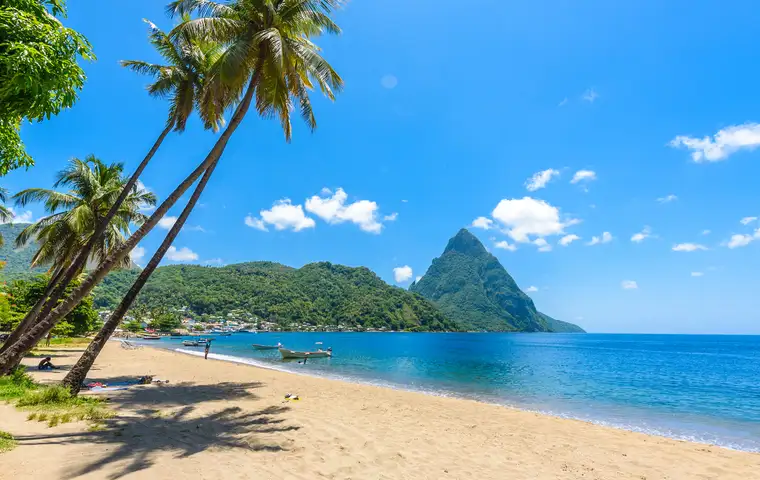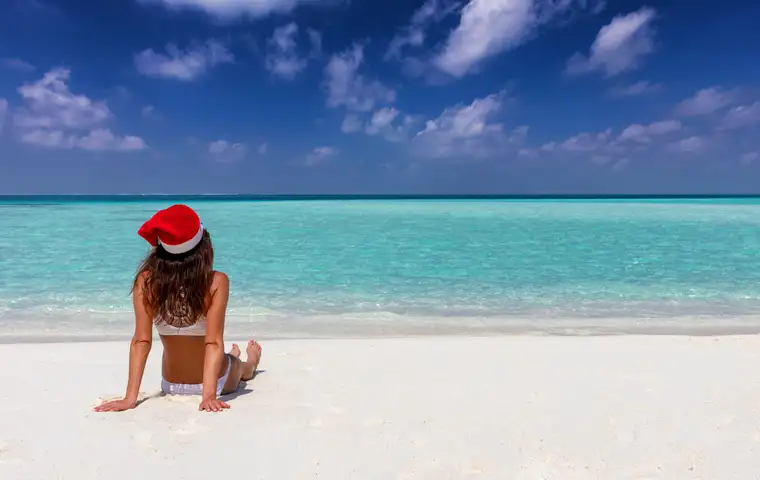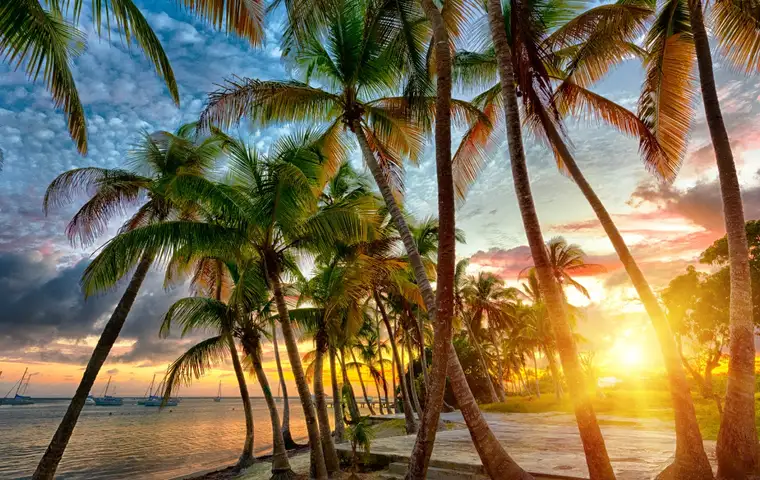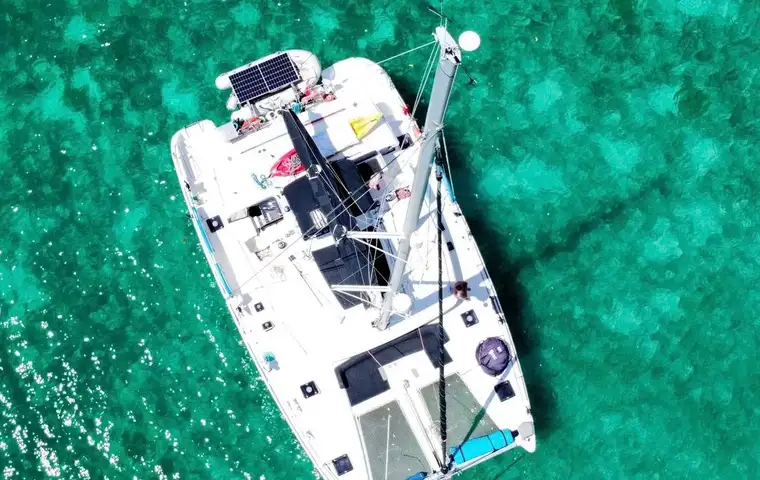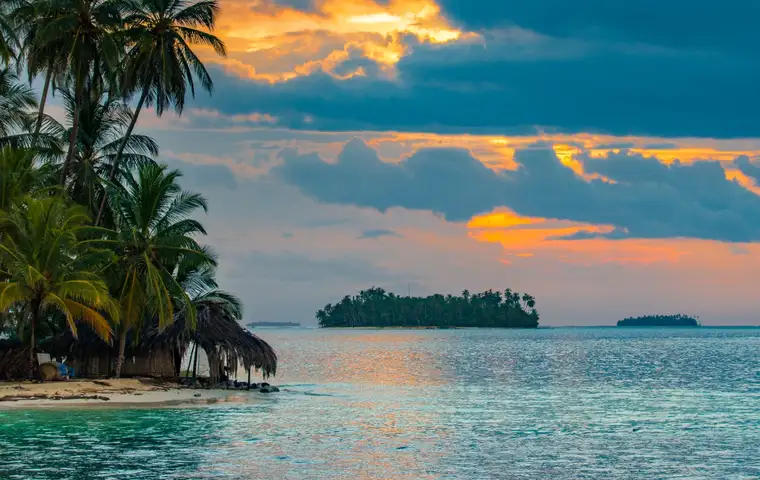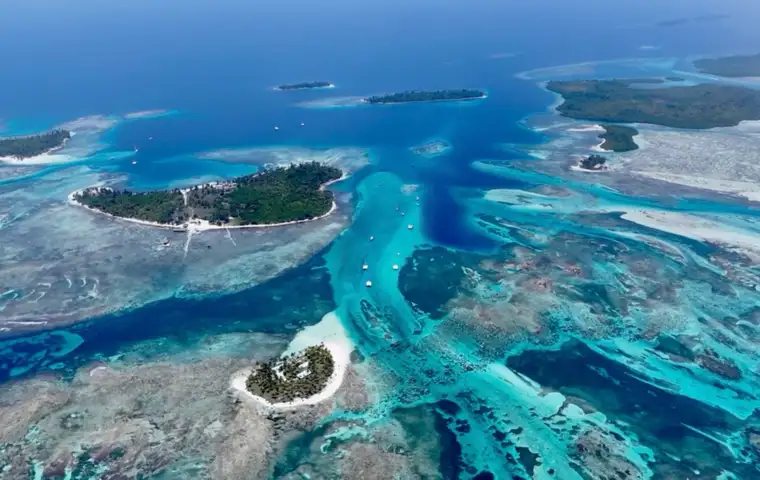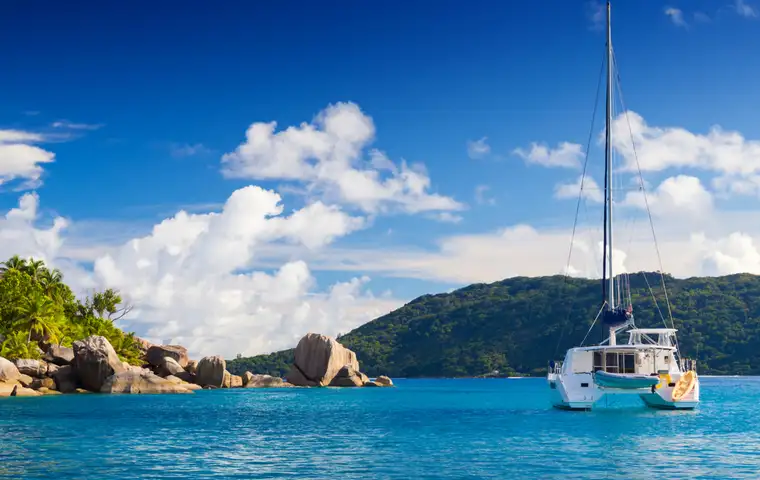
Guide to the most beautiful destinations, coasts and islands in the Caribbean
From Cuba to the Grenadines, via the fascinating Bahamas and the green Antilles: Martinique, Dominica and Guadeloupe. Either way, a dream trip to tropical islands.
The Caribbean islands are the ideal destination for sailing trips, where you can sail from island to island propelled by the trade winds and experience true island hopping. Across the blue Caribbean Sea, from one blue-water bay to the next, until you skim the shore surrounded by coral reefs.. On land, on the other hand, fine sandy beaches framed by coconut palms and paths that branch off into tropical forests. Just choose one of the Caribbean archipelagos to find picture-postcard scenery combined with local culture, rum, and above all, adventure!
The best time
The climate in the Caribbean is typically tropical, with temperatures ranging between 20 and 30 degrees throughout the year. However, the most favorable time to visit these islands by sailboat is from November to April, coinciding with the dry season. During these months, disturbances are virtually absent and temperatures are high with moderate winds. From May onward, however, humidity increases, accompanied by rainfall and the possibility of hurricanes.
Caribbean vacation highlights
Clear blue seas, palm trees and turtles: all this is more beautiful on a boat
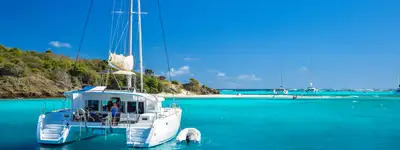
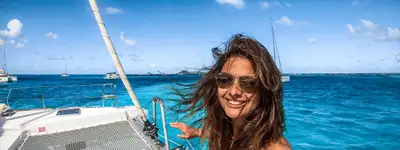


6+
Show all
The most beautiful archipelagos and islands in the Caribbean
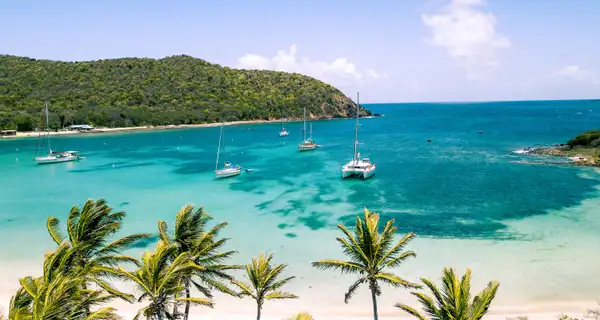
Saint Vincent e le Grenadine
The Grenadines are an archipelago of more than 600 islands, many of them uninhabited, resulting in a paradise for sailing enthusiasts. Crystal clear blue seas and constant trade winds make the area ideal for fun and enjoyable sailing.
Among the gems not to be missed are Bequia, with its enchanting Princess Margaret Beach, and tiny Mayreau and Union Island, which offer charming anchorages overlooking the high green hills. However, the real highlight for sailors is the Tobago Cays Marine Park, a collection of five islets protected by coral reefs. Here, amid waters that fade from green to deep blue, you can dive in long snorkeling sessions or go kite or windsurfing.
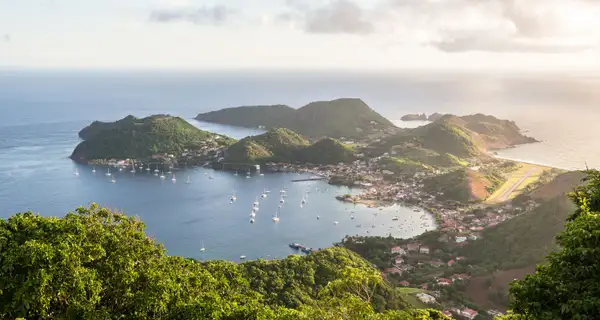
Guadeloupe
Guadeloupe is one of the richest islands in the Lesser Antilles, offering a combination of rugged coastlines to circumnavigate, crystal-clear bays to stop in, and hiking trails to discover on foot. Stop at anchor in the Baie de Malendure, circumnavigate the tiny Ilet Pigeon, or sail to Les Saintes for a closer look at the coral reefs and the myriad marine species that inhabit them-either way, you will be captivated by the abundance of these places.
Don't forget your sneakers to walk the many trails within the island's lush tropical rainforest or to discover Creole traditions in the capital city of Pointe-à-Pitre, in a fascinating mix of nature and culture.

Dominica and Martinique
Placed closely on top of each other, these two islands are characterized by a strong French influence and lush nature that is shown at its finest in Dominica's rainforest, also called "nature's island," and in Martinique's manicured botanical gardens.
Hiking trails, waterfalls and rich vegetation make up only part of the islands' heritage, however. On a sailing itinerary, you can stop in Portsmouth Bay for a vantage point over the island's rolling hills with rich vegetation, or in Soufrière Bay characterized by warm water currents from nearby hot springs. In Martinique, on the other hand, you will discover beaches of golden sand and turquoise water such as Grande Anse d'Arlet but also those of volcanic black sand such as Anse Noire and Anse Dufour.
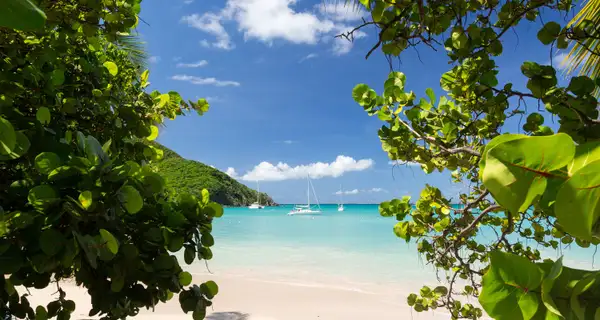
Saint Martin
Split down the middle between northern French and southern Dutch, Saint Martin features white sandy beaches, chic restaurants and clubs, and a lively atmosphere. Due to its conformation, the bays are often sheltered and the sea is calm, offering countless opportunities for anchoring such as at Baie Longue or Anse Marcel.
On land, enjoy hiking trails through the tropical rainforest, discover the island's colonial history by visiting Fort Louis and the island's old sugar mill, get lost among the market stalls in Grand Case.
Saint Martin also lends itself perfectly as a base for island hopping: from here, you can sail south around the small but paradisiacal Saint Barth, or north by stopping in Anguilla and then reaching the British Virgin Islands.
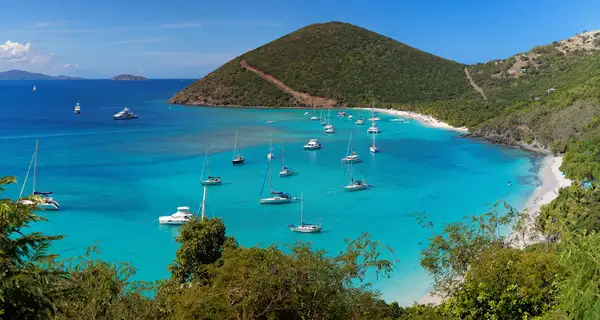
BVI - British Virgin Islands
In the heart of the Caribbean, the BVIs are a group of islands with rugged coastlines that offer exciting sailing, protected bays in turquoise and blue tones, and hiking trails through lush hills and valleys.
Among the must-visit sites to visit by sailboat is definitely The Baths on Virgin Gorda Island, with its landscape of monolithic rocks and granite caves to be visited by swimming, but also White Bay Beach and Bubbly Pool on Jost Van Dyke Island with their expanses of white sand surrounded by coconut palms. For diving enthusiasts, don't miss the wreck of the famous RMS Rhone, wrecked off Salt Island. Visible even while snorkeling in optimal weather conditions, it lies at a maximum depth of 30 meters and is home to a riot of marine flora and fauna.
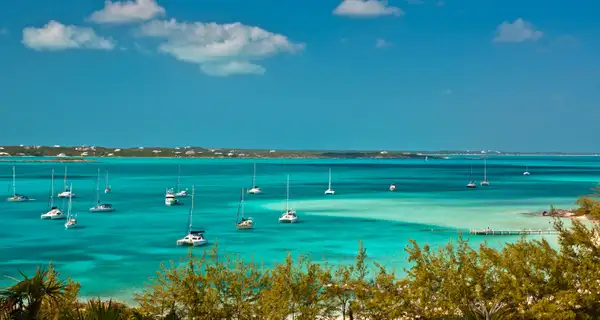
Bahamas
Just a few miles away from Miami, the Bahamas is an archipelago of about 700 islands, some larger and densely populated, such as the capital city of Nassau, others uninhabited and wild, such as many of the Exumas or Abaco Islands. Here the wind blows steadily throughout the year, making them a paradise for sailing or catamaran trips that will allow you to roam freely to discover the most beautiful and inaccessible bays. For example, visit Thunderball Cave in Exuma Cays, drop by to admire Dean's Blue Hole on Long Island, or stop along the shores of Conception Island to dive the coral reef.
If marine adventures are not enough for you, head down to Waderick Wells Cay to climb to the top of the hills and enjoy the spectacle of the archipelago from above.
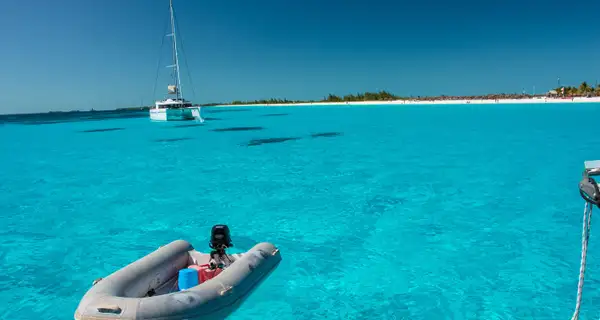
Cuba
The quintessential Caribbean island, vibrant and with a long history to tell that can be felt in every corner of its calle and in every bay of its islands. Few people know that the archipelago around Cuba consists of more than 4,000 rocky islets and caves, and is considered an extraordinary sailing area.
Departing from Cienfuegos, whose perfectly preserved colonial old town is really not to be missed, you can reach the island of Cayo Largo and stop near Punta Mal Tiempo, a long tongue of fine white sand overlooking a turquoise sea. Sail to Cayo Capo and Cayo Divisa to enjoy the virgin territories of these islands, and then arrive at Cayo Rosario: its waters rich in marine flora and fauna will leave you speechless.
Sailing vacations in the Caribbean
6 Marine Protected Areas to visit by catamaran in the Caribbean
Tobago Cays Marine Park, Grenadines
Five uninhabited islets protected by a larger reef and a smaller one to form a series of lagoons perfect for anchoring. Here you will find deep blue sea, rich seabed and the wind always favorable, even for kiting or windsurfing.
Cousteau Reserve, Guadeloupe
Named after the explorer Jacques-Yves Cousteau, the Reserve offers the opportunity to immerse yourself in a spectacular underwater world, accessible even by simple diving. You will find coral reefs, underwater caves and a myriad of different species, including tropical fish, turtles and a variety of coral.
Islet of Pinel, Saint Martin
Reachable only by boat, the Pinel Nature Reserve includes the islet of the same name and the reef that protects it on the western side. Here the sea ranges from deep turquoise to ocean blue, the beaches have fine white sand, and the view reaches all the surrounding islands.
Anegada, British Virgin Islands
A couple of hours' sail from Virgin Gorda is flat Anegada, which is home to the longest coral reef in the Caribbean, called the Horseshoe Reef, the main attraction for sailors who land on this island.
Andros Barrier Reef, Bahamas
Just below the surface of the water, the Andros Reef lies along the east coast of the island at the "Tongue of the Ocean" ocean trench. With its vertical walls and underwater canyons, it is the ideal environment not only for corals but also for tropical fish, sea turtles, sharks and dolphins.
Jardines de la Reina, Cuba
A completely uninhabited and virtually unexplored archipelago of virgin islands hides a breathtaking underwater ecosystem of corals, sponges and tropical fish. But what attracts the few tourists lucky enough to sail here are the sharks: guaranteed sightings!
FAQ
Guides & tips
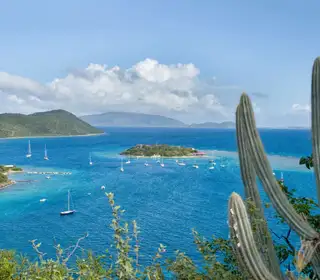
Where to travel
British Virgin Islands by catamaran
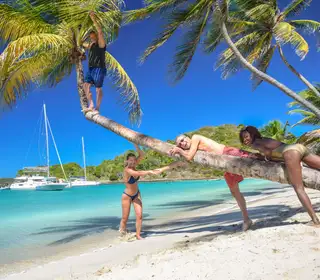
Where to travel
Grenadines, Martinique, Guadeloupe and St. Martin by sailboat
Let's talk Sailsquare!



Secure payments



© 2025 Sailsquare Srl SB • All rights reserved - VAT IT07860990964


